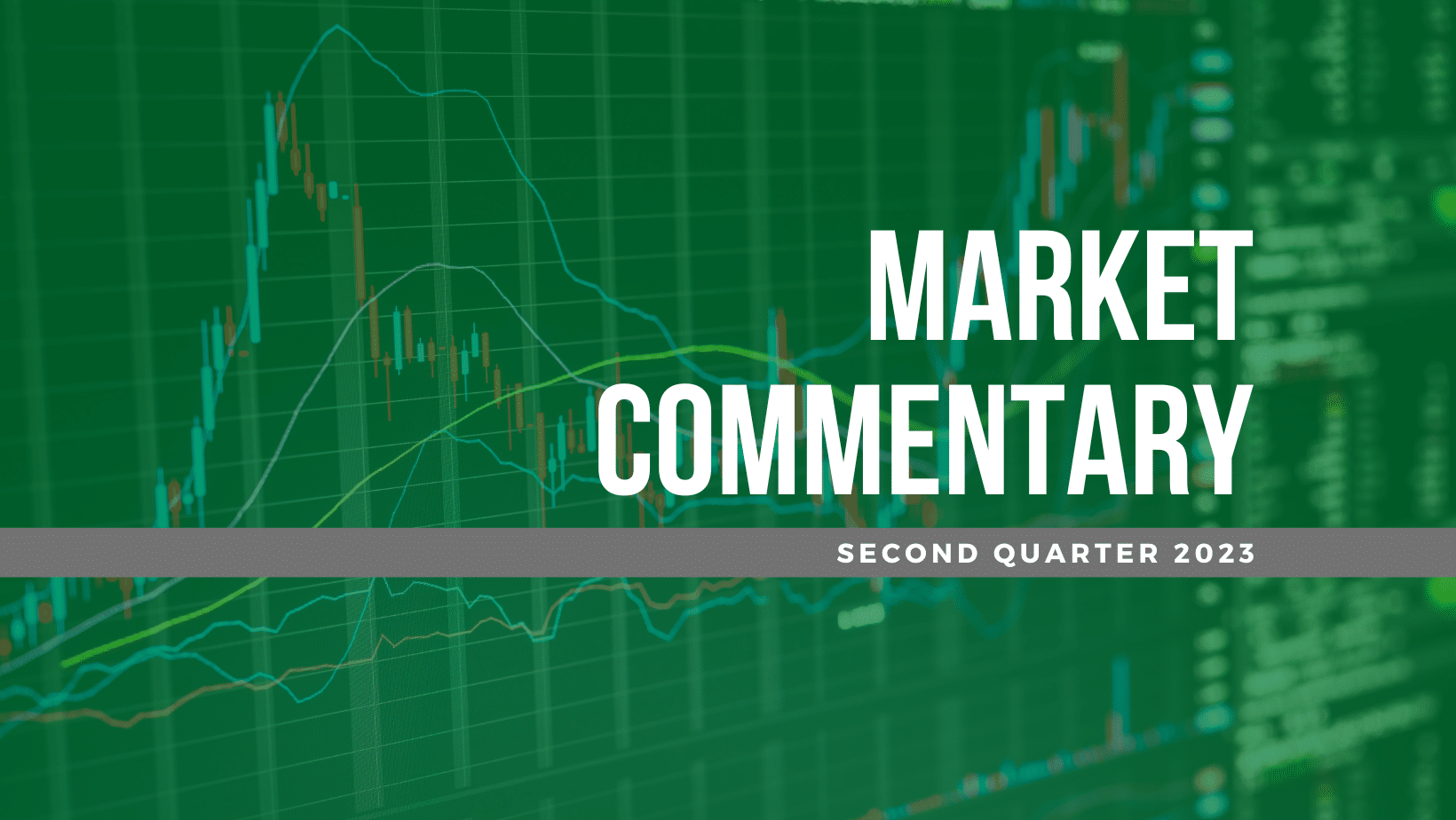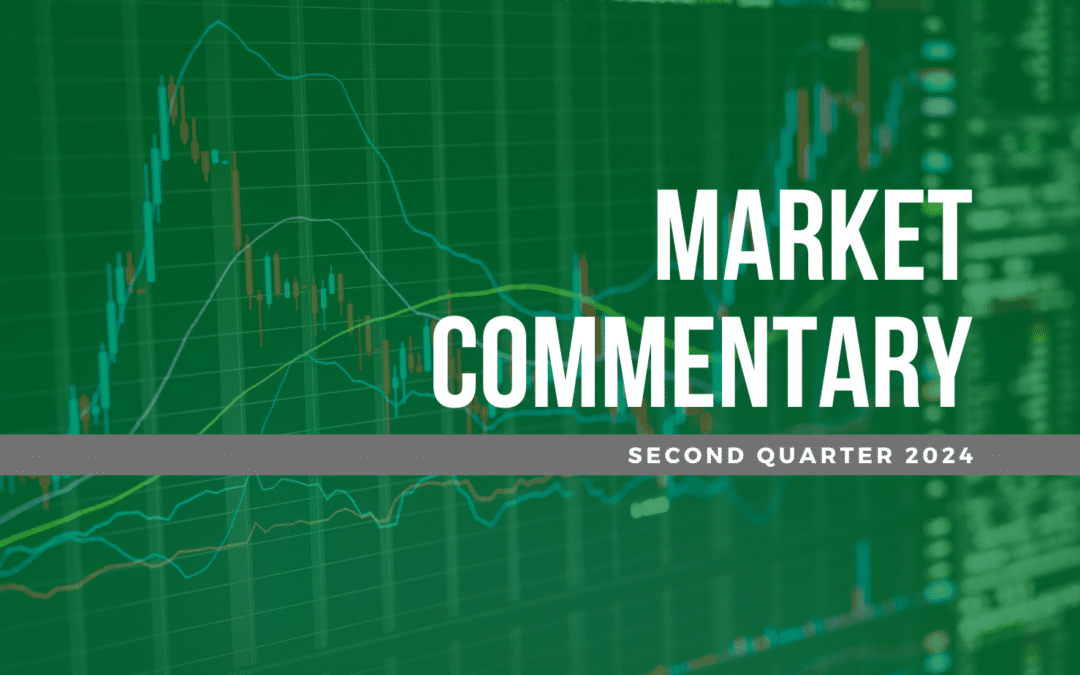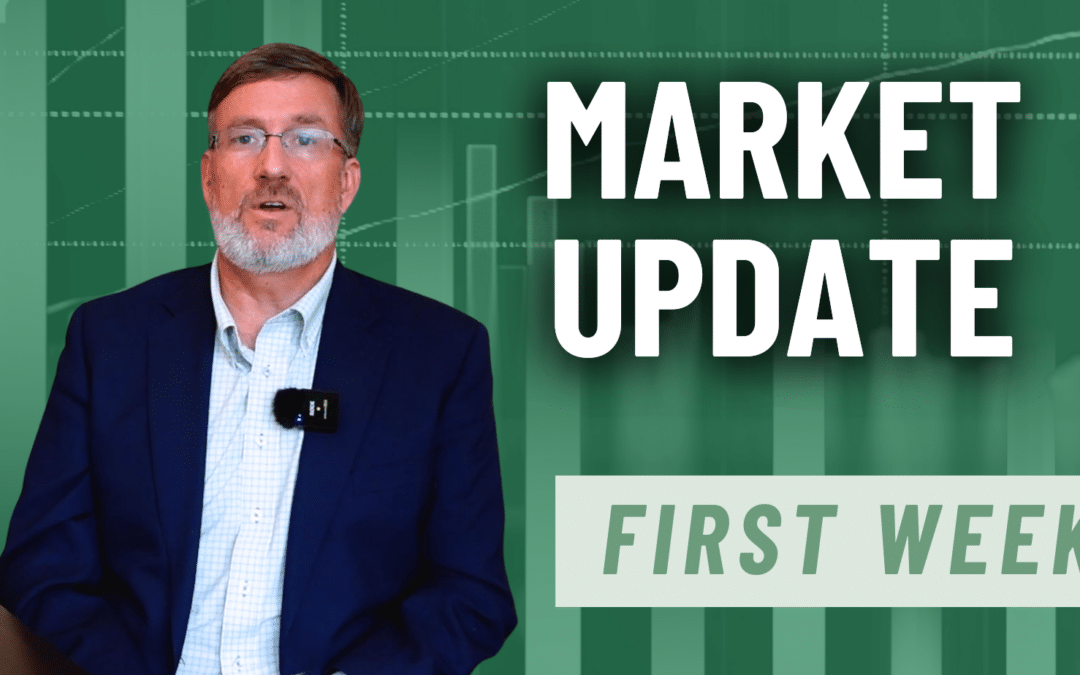Economic Overview
By Dr. Mark Pyles
As with most things, we would like economic data to provide concise and definitive answers. But of course, that is not reality. US Real Gross Domestic Product (GDP), the most common indicator of economic growth, stands at 2.0% quarter over quarter annualized (QoQ). The Unemployment Rate, which measures the health of the labor market, is currently at 3.7%. Consumer Price Inflation (CPI), arguably the most influential metric by which we measure price levels throughout the economy, is at 4.0% year-over-year (YoY).
Naturally, these values must be viewed alongside historical comparison. During the ten years prior to the COVID pandemic (2010 – 2019), Real GDP averaged just under 2.3% QoQ. The unemployment rate averaged about 6.2% and CPI ran about 1.8% YoY. So, in relation – and without further context – one could conclude that inflation is too high, the labor market is in great shape, and growth looks about normal.
While none of those statements are necessarily false, the reality is that ours is currently a very complicated economic backdrop. And to illustrate, it is often informative to more deeply analyze the raw data through three additional lenses: the trend, the details, and the expectation.
The Data
First the trend of data is critical, as it informs us on the direction in which we have most recently come and guides the direction in which we are likely to immediately go. The importance of trend can easily be illustrated through current inflation metrics. Nearly everyone would agree that the most recent print of CPI for May is too high. After all, the Fed has been clear in their view of getting down to a 2% level as necessary to prevent the economy from experiencing significant harm. However, we are now at the one-year anniversary of the June 2022 CPI print, which at 9.1% served as the peak of the recent inflationary cycle. In fact, the May 2023 YoY change marks the eleventh straight month in which the number was smaller than the previous. Thus, the trend is clearly downward, which represents a very positive development.
Trends in the US Labor Market also provide interesting economic fodder for discussion and contemplation. In addition to an undeniably low unemployment rate, jobless claims also support the notion that ours is a robust labor market. We are currently at a 4-week moving average value of 257.5K claims. This compares very favorably to the 312K weekly average during the 10-year period prior to COVID. However, we were below 200K as recently as January, and as such, the most recent trend is more towards a softening of the labor market. Payrolls data show a similar trend, with the monthly add to nonfarm payrolls averaging 283K over the last three months – down from an average of 399K per month for 2022.
The Details
A second lens through which all economic data must be measured is simple but important – the details matter. For example, on the inflation front, the May print of CPI further substantiated that goods inflation is no longer the major problem. Also, food inflation has now decreased to under 1%. And energy has been disinflationary for the last three months, which is a stark difference from June 2022 when this item contributed nearly 3% to YoY headline CPI.
Thus, we are further convinced that the remaining issues with inflation primarily lie in the services area, which contributes 3.7% to headline inflation. A deeper dive finds that much of services inflation lies in shelter costs, which are notoriously challenging to appropriately measure and for which we have strong reasons to believe relief is coming. That aside; however, there are still important core areas exhibiting elevated price pressures. For example, the so-called “supercore inflation” measure, which includes components like medical care, transportation, and water, sewer, and trash collection, sits at 4.6% YoY.
Digging further into the details, we find that inflation is also regional. For example, Los Angeles, New York, and Chicago have average headline CPI of only 3.3%, while Miami (9.0%) and Atlanta (5.8%) continue to see substantially higher levels. It is also important to recall that the Fed’s preferred gauge of price levels is core Personal Consumption Expenditures (PCE). While at a similar current level (3.8% YoY), this metric has taken a much different route in getting to this point and could continue to do so. The Producer Price Index (PPI) came in at only 1.1% YoY for May, which illustrates some significant differences in pricing pressures faced by consumers and firms. Clearly, details matter and provide a very cloudy view of inflation. Similar journeys could be taken through any of the broad economic data categories.
The Expectation
Finally, the lens of expectation is increasingly important. When economic numbers that we receive come in as anticipated, such a result is generally not “market moving.” Rather, it is when reality differs from expectation that truly fuels confusion. And we have had more than our share of disconnect between expectations and reality in recent months.
This is nowhere more apparent than in economic growth. During the latter half of 2022, consensus was strongly convinced of an impending recession. It was expected this would be born out in subsequent data once the intense tightening campaign from the Federal Reserve started to work its way through the system, tamping down demand along the way.
Thus far, consensus has been wrong. The recent GDP print of 2% for Q1 2023 represented the third consecutive quarter where an economy that was supposed to slow down managed to churn out respectable growth. This is due largely to consumers continuing to spend. Personal Consumption, which makes up more than two-thirds of GDP, increased by 4.2% in Q1 2023. This was on the back of 1.0% for Q4 2022 and Q3 2022.
Still, there are plenty of ominous signs on the horizon to be found without much effort. The yield curve remains significantly inverted – historically a sign of a recession to come. The Conference Board’s Leading Indicators Index (LEI) is at levels never before encountered without an accompanying recession. There are countless surveys regularly conducted, and the responses to most of them lean negative. This is particularly true of those that relate to manufacturing activity.
Are expectations wrong, or just early? While clearly difficult to determine, we lean more into the latter camp and remain relatively cautious about economic growth over the coming six to twelve months. Consumers are reducing excess savings at a fairly rapid clip, with current savings rates significantly below pre-COVID levels. And with subtle signs of labor market softness likely to gain steam heading into the fall, we feel spending behavior will also turn more conservative.
Are expectations wrong, or just early?
While clearly difficult to determine, we lean more into the latter camp and remain relatively cautious about economic growth over the coming six to twelve months.
Finally, more so, we recognize that monetary policy does indeed operate with a long and varied lag. It has been longer and more varied than we have anticipated, admittedly. The Fed at long last completed a meeting without a rate hike in June, holding the upper bound of the Federal Funds rate at 5.25%. However, they clearly signaled they do not expect to be done, and consensus is penciling in an additional 25BP hike in July. Even if that turns out to be the peak level, the market now expects rates to remain there into next year, given the stickiness of some areas of inflation and the steadfastness with which the Fed has made clear their 2% inflation goal.
As such, we remain skeptical that the economy can escape this degree of economic braking power unscathed and have been positioned relatively defensively in preparation. While we anticipate continuing to remain so, at the same time, we have opened ourselves to the realization that there are elements at play that are indeed unique in relation to past periods. All data must be viewed with nuance, and through as many lenses as possible – until greater clarity can be found.
The Stock Market
By Walter Todd
Return of the Jedi celebrated its 40th anniversary this year. The second quarter and really the first half of 2023 could well be titled Return of the FANGMA (trade). We discussed this in our commentary last quarter, but the bifurcation between the largest 5 to 10 stocks and the rest of the market became even more dramatic over the last three months. The acronym FANGMA stands for Facebook (Meta), Amazon, Netflix, Google (Alphabet), Microsoft and Apple. I would throw Tesla and Nvidia in there as well for discussion (so FANNGMAT). Recall that one way to look at this differentiation between these mega-cap names and the rest of the market is to compare the S&P 500 Index (SPX) performance to the Equal-weight S&P 500 (SPW). Through the 1st quarter of 2023, the market-cap-weighted SPX had outperformed the SPW by approximately 4.6%. In the 2nd quarter, the market witnessed an additional 4.8% spread develop, such that for the first half of the year, the total spread was 9.9% in favor of SPX. Essentially all of this spread has occurred since March 8 which is the day before SVB bank failed. The addition of the AI (Artificial Intelligence) story has only supercharged this move in recent months. This divergence has reached extreme levels vs. history at this point, and we believe it should start to narrow as we move through the rest of the year. With that said, let’s review the broader performance trends from the second quarter.
For the quarter, the S&P 500 Index closed up +8.7%, including dividends, for a third consecutive positive quarter. Year-to-date (YTD) the S&P is up 16.9%. Small-cap stocks (as measured by the S&P 600) were positive but lagged large-cap companies, ending the quarter higher +3.4% and are a positive +6.0% for the YTD period. This small vs. large spread is also reflective of the discussion from the first paragraph. International stocks posted a positive quarter with Developed International Markets up by +3.2% for the quarter (as measured by the EAFE Index) and Emerging Markets (EM) +1.0% for the quarter (measured by the MSCI Emerging Market Index). These indices are up +12.2% and +5.0%, respectively, YTD. International stocks have lagged their US counterparts as the US has benefited from much higher Technology exposure. Putting the US and International Markets together, the MSCI All-Country World Index (ACWI) finished up by +6.3% for the three-month period and +14.3% YTD.
In the US market, similar to the first quarter, we had many sectors in the green for the latest three-month period (9 of 11) but again only 3 of 11 outperformed the overall market. The “Big Three” were again Technology, Communications Services and Consumer Discretionary. These three sectors were all up over 13% for the past three months and are all higher by over 32% YTD. Technology was on top for the quarter (+17%) and YTD (+43%). For the same periods, Comm. Services ended up +13% / +36% and Consumer Discretionary was +15% / +33%. Continuing the concentration theme, we started this discussion with three names (AAPL, MSFT and NVDA) account for 62% of the weight of the Technology sector; two names (AMZN and TSLA) account for 47% of the Discretionary sector; and 3 names (META, GOOG and NFLX) account for 69% of the weight of the Communications sector. Defensive areas dominated the bottom of sector performance with Healthcare, Real Estate, Staples, and Utilities joined by Energy in the bottom five. These sectors ranged from up +2% to down -3% with Energy and Utilities the only sectors that were negative for the quarter. Industrials came in fourth place for the quarter, up just over +6% and has performed solidly YTD up +10%. Wrapping up the review of the first half of the year we had 4 of 11 sectors negative for this time period: Financials, Healthcare, Energy and Utilities. The spread between the best performing sector (Technology) and the worst performing (Utilities) is nearly 50%, historically very wide.
There are a few other points we would make about the market performance so far in 2023. From a factor standpoint, the market has favored Volatility and Growth and avoided Value, Profitability and Dividends. In other words, the market exhibited risk-seeking behavior which was a bit of a surprise to us in the face of some of the events and data discussed earlier. While we have several different equity strategies for clients, in general this backdrop has been relatively unfavorable for our positioning as we are underweight those factors that did well and overweight those that underperformed. As you might guess from our earlier discussion on market concentration, Size was also a factor in favor. In our large-cap strategy, while we own positions in some of the largest names, we are relatively underweight the top of the market. As we evaluate positioning going forward, we would note that, according to Bloomberg, the top five names in the S&P 500 trade at 29x earnings while the rest of the S&P trades at under 17x in aggregate. As such, we continue to see better value outside the top of the market and will endeavor to look for opportunities in this space as we expect the gap between the SPX and SPW to narrow.
The Bond Market
By John Wiseman
After two strong quarters of performance, the fixed income market took a breather as rates moved higher, most prominently in shorter maturity bonds. The Federal Reserve raised the benchmark rate at its May meeting but paused the hiking cycle in June to assess the cumulative effects of the increases to date. This seems to be prudent even though economic data continues to be modestly strong. The yield on the 2-Year Treasury Note finished the quarter at 4.90%, just below the March peak of 5.03% (a 16 year high). This was an increase of 87 basis points (0.87%) for the quarter, resulting in a total return of -0.92%. For the year, its yield is 47 basis points higher, producing a total return of 0.49%. The yield on the 10-Year Treasury Note is 37 basis points (0.37%) higher in the quarter but is roughly the same as at the beginning of the year of 3.87%. The resulting returns are -1.93% and 1.70% for the quarter and year, respectively. The yield curve is still inverted at its most negative level in 40 years and remains a concern for the macroeconomic outlook. We like government bonds given how high rates are relative to the last decade.
The corporate bond sector was the best performing on a relative basis for the quarter but had mostly negative returns because of higher underlying rates. Spreads – the amount of yield over Treasuries that investors are compensated for assuming company-specific risk – narrowed throughout the quarter as concern around bank failures subsided. The spread of the Bloomberg Intermediate Corporate Index narrowed to 109 basis points. It peaked this year at 156 basis points during the banking crisis. The total return of this index was -0.16% for the quarter and up 2.33% for the year. Financial bonds were the best performing sub-sector as they recovered from the weakness earlier in the year. Lower-rated bonds outperformed higher-rated ones. Junk bonds were positive for the quarter and outperformed investment-grade bonds by more than 300 basis points. We remain focused on credit selection given how narrow spreads are at this point in the cycle.
Municipal bonds continue to be relative laggards in the fixed income sector. One driver of this weakness is collateral damage from the banking crisis in March. Many banks were buyers of these securities given their relative attractiveness when interest rates were low. As depositors sought higher yields away from bank accounts, these institutions had to, in part, sell securities to meet those redemptions. Additionally, the portfolios of the failed banks were liquidated by the Federal Deposit Insurance Corporation (FDIC). Fortunately, there was not a lot of new issuance in the marketplace or it could have been a more difficult environment for these securities. The Bloomberg 5-Year Municipal Index ended the quarterly period with a total return of -0.72% but is still up 1.19% for the year. The ratio of the 5-Year Municipal to Treasury, a measure of relative value, is 63% which is slightly below the ten-year average. However, given the higher absolute yields, we continue to favor municipal bonds in our area, but must consider the federal spending related to Covid is over and some municipalities may need to fill that void.
In summary, similar to the equity market, the bond market seemed to move toward risk with rates moving higher and high-yield or lower rated securities outperforming higher quality issues. In general, our positioning of being lower duration (maturity) and overweight corporate bonds benefited our taxable bond portfolios for the quarter and YTD.
The information contained within has been obtained from sources believed to be reliable but cannot be guaranteed for accuracy. The opinions expressed are subject to change from time to time and do not constitute a recommendation to purchase or sell any security nor to engage in any particular investment strategy. Investment Advisory Services are offered through Greenwood Capital Associates, LLC, an SEC-registered investment advisor.







